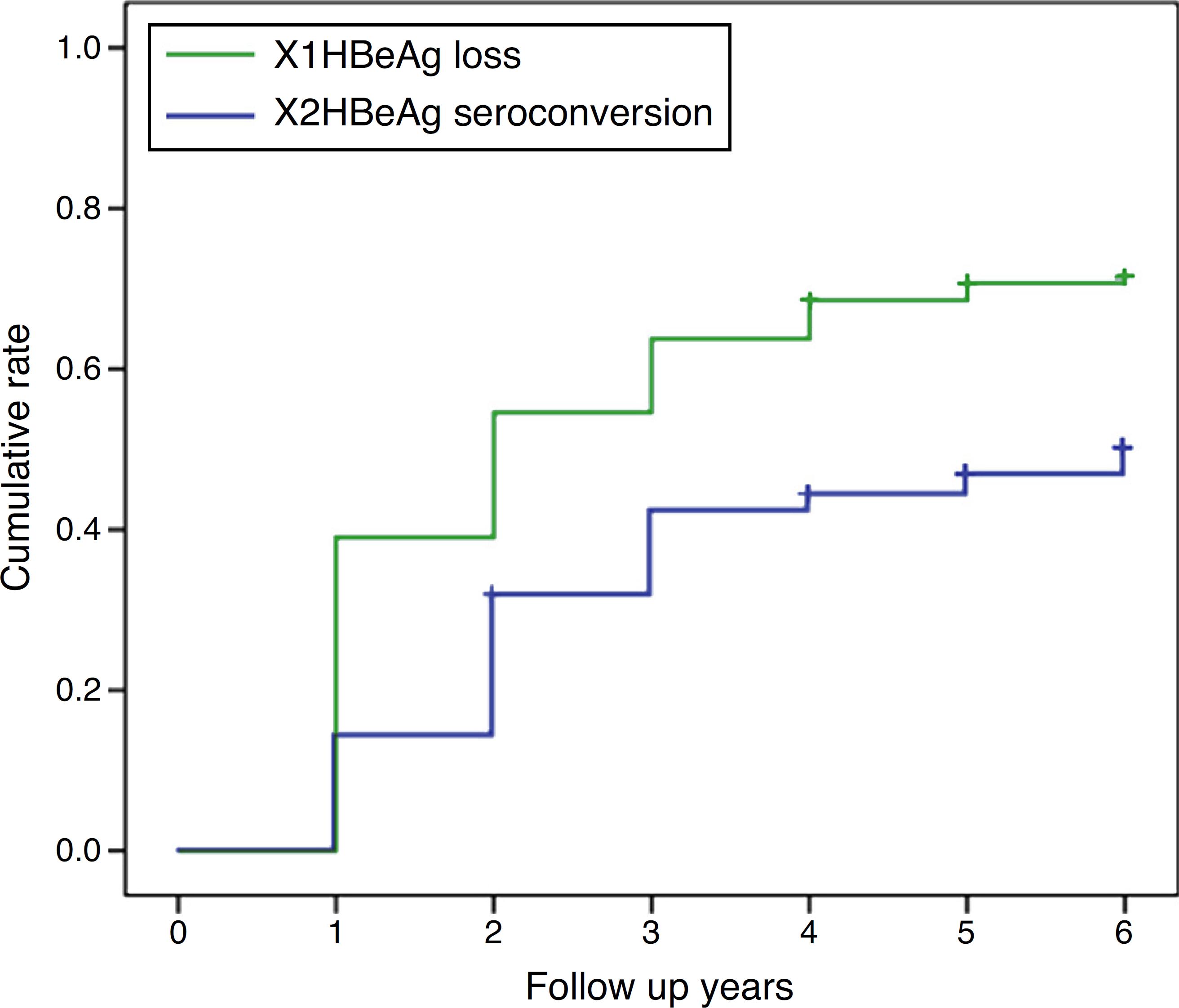ABSTRACT
Aims:
To evaluate the HBeAg seroconversion rate in real clinical setting and explore its predictors in long-term nucleos(t)ide analogues (NAs) treatment for chronic hepatitis B (CHB).
Methods:
251 patients were recruited from January 2001 to September 2009 in four hospitals in Hebei province, China, for this retrospective study. Clinical and laboratory data before and after treatment with lamivudine (LAM, 100 mg daily), adefovir (ADV, 10 mg daily), telbivudine (LDT, 600 mg daily), entecavir (ETV, 0.5 mg daily), and LAM/ADV combination were compared among three groups according to treatment outcomes: synchronous HBeAg loss and HBeAg seroconversion, anti-HBe development after treatment, and no anti-HBe. Adherence was also evaluated.
Results:
In real clinical setting, cumulative HBeAg seroconversion rates were 14.3%, 32.7%, 43.0%, 46.9%, and 50.5% after 1, 2, 3, 5, and 8 years, respectively. 45 patients (17.9%) were non-adherent. Adherence (p < 0.001, Hazard Ratio (HR) = 2.203), elevated alanine aminotransferase (ALT) levels (p < 0.001, HR = 2.049), and non-vertical transmission (p = 0.006, HR = 1.656) were predictors of HBeAg seroconversion.
Conclusion:
Adherence, elevated ALT, and non-vertical transmission are predictors of HBeAg seroconversion in CHB patients treated with NAs.
Keywords:
Chronic hepatitis B; Hepatitis B and antigens; Nucleos(t)ide analogue; Adherence



